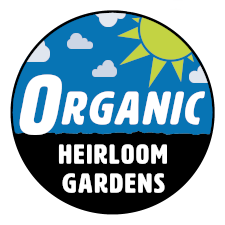The Seed Potato For Home Gardeners - Best Size? Cut or Whole?
Posted by Organic Heirloom Gardens on Feb 7th 2018
Introduction
The seed potato debate is older than any of us…...cut or whole? Big or small? Some are very passionate about their opinions on this subject. You will find people on either side of the issue have their reasons for this method or that. You even have companies out there (we won’t name any names) making claims that WHOLE seed potatoes when planted will produce 20% more than pre-cut…….Is this true????? Well it can be in a way but the statement is a bit misleading. First off the word "more" is subjective to the reader's interpretation. It could mean more weight, it could mean more quantity of potatoes in number. Heck the way it reads it could mean MORE of anything you wish, like Star Trek garden gnomes or flying pandacorns. ;)
Any good politician would be applauding right now. To say that “THE ONLY REASON a seed potato would produce more weight or quantity of tubers is because it is whole” is absolutely FALSE. There are many factors that play into total yield in weight, quantity, and size of potatoes. The least of which is if the potato seed is cut or whole.
So let's get to the truth as it pertains to home gardens and break this down in a way everyone can understand without reading hundreds of pages worth of research papers. We will try to stay out of the weeds (so to speak) because the data is actually rather extensive believe it or not. Which of course begs the question what some claims made about seed potatoes are based on. Especially claims from companies that are supposed to be able to provide an informed recommendation to their customers.
Keep In Mind: This is for home and small gardens. Most studies were conducted for large operations. They are geared towards using every ounce possible for planting and using an automatic potato slicer for being uniform all around in order to make the most possible profit and least possible loss. Think of it like you making a burger and McDonald’s making a burger. If you make a ¼ pound hamburger and it actually ends up weighing ½ pound then you don't eat it all you just wasted meat and money yes, but not much. If McDonald’s messes up their weight by even ½ ounce on every burger for one day, they just wasted literally TONS of meat and money. That is why these studies are so precise and overplay factors that really just are not life changing for the home gardener.
Cut Or Whole Seed Potatoes?
Whole Potatoes:
- Pros - less chance of disease, more stems emerge, more food for emerging plants
- Cons - slower to emerge, too many stems in one area can cause crowding, eyes not pointing up
Cut Potatoes:
- Pros - more potatoes to plant, plants emerge quicker, eyes pointing up
- Cons - more disease prone if not healed properly
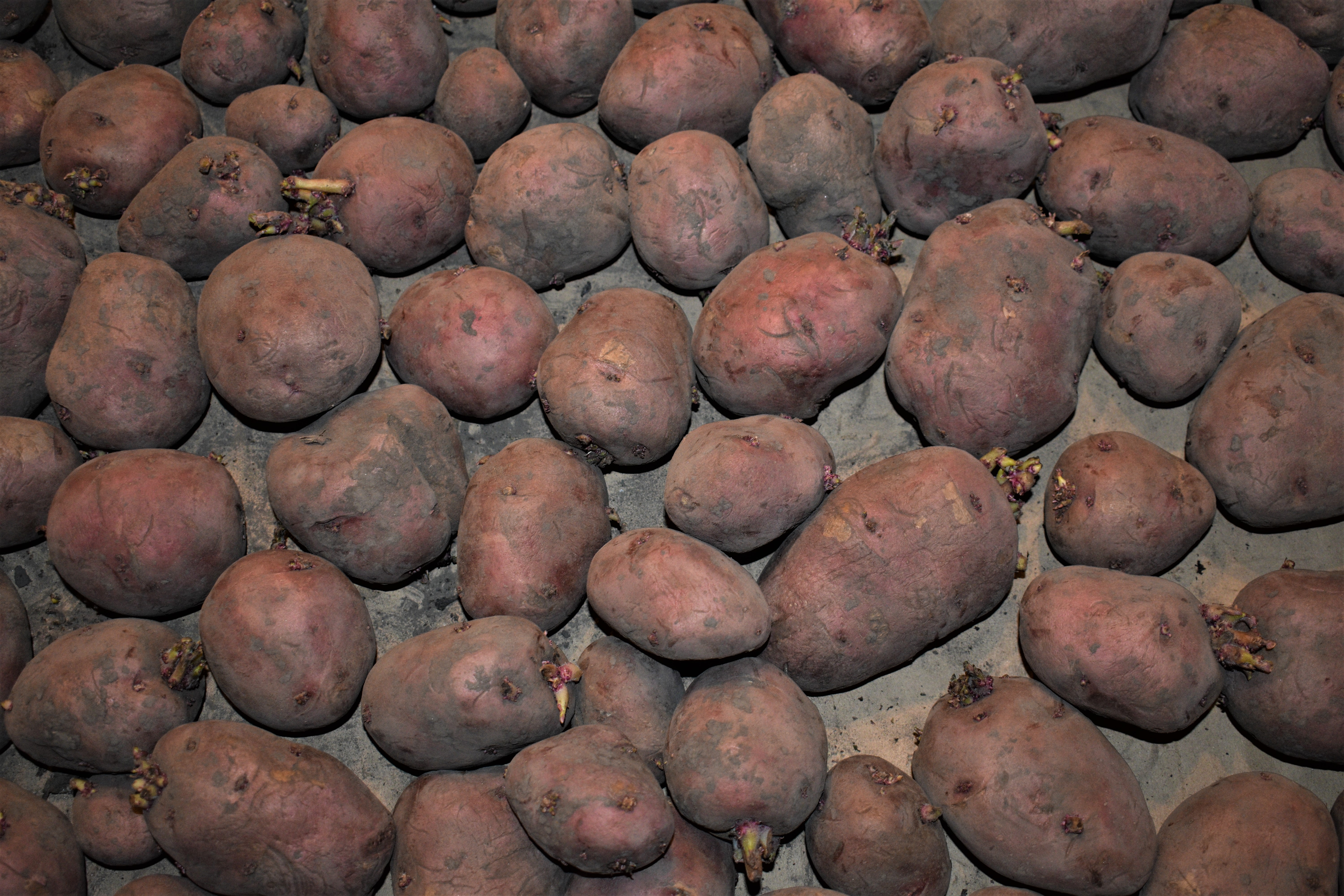
An in depth study on Russet potatoes states:
“Cut seed produced a higher yield of tubers > 51 mm diameter in comparison to all whole tuber seed sizes, with the exception of the 28 and 56 g sizes. In terms of total yield, the 28 and 42-g whole seed tubers yielded significantly less than all other seed sizes examined”.
Whole & cut seed will both produce potatoes to harvest though varying in size and yield.
What we are seeing is that the cut seed was producing a higher yield of LARGE tubers over 51mm at harvest in comparison to ANY sized whole seed potatoes in the study except 2 sizes.
In terms of total yield weight, cut seed produces just as much as whole seed on average.
As a matter of fact, two sizes of the whole seed produced “significantly less” in total yielded weight than any other seed in the study. There goes the 20% more from WHOLE potatoes huh? BUT WHY? There has to be more at play here than “cut or whole” affecting yield.
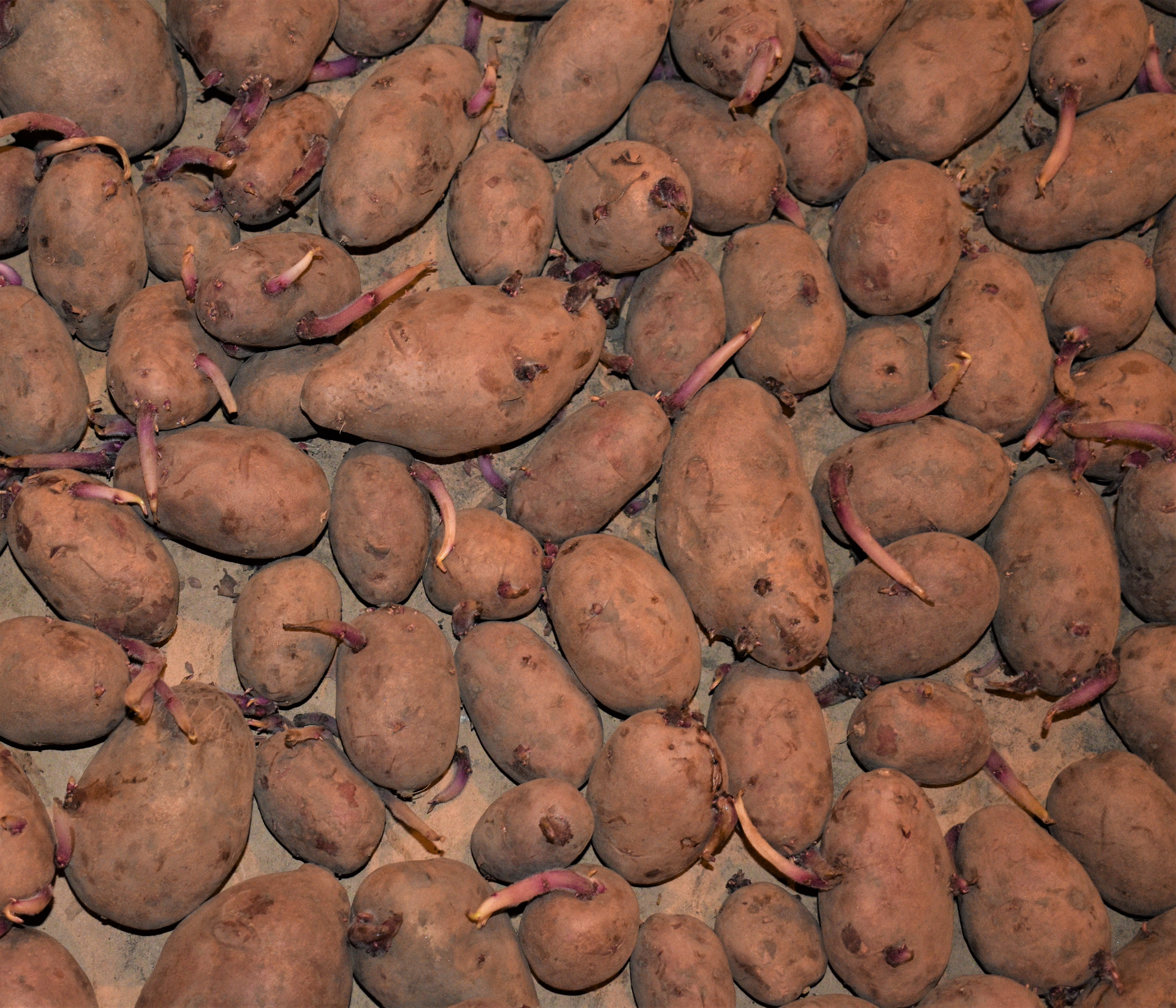
Note: Always allow cut seed potatoes to “heal” or “scab over” before planting. After cutting let them sit out for several days until they dry some on the outside and form a new “skin”. The leathery dry surface that forms helps protect the cut seed from disease.
Potato Eyes & Stems
Now when it comes to eyes and stems per plant there is a question to be asked…….
Do I want BIG POTATOES or small potatoes?
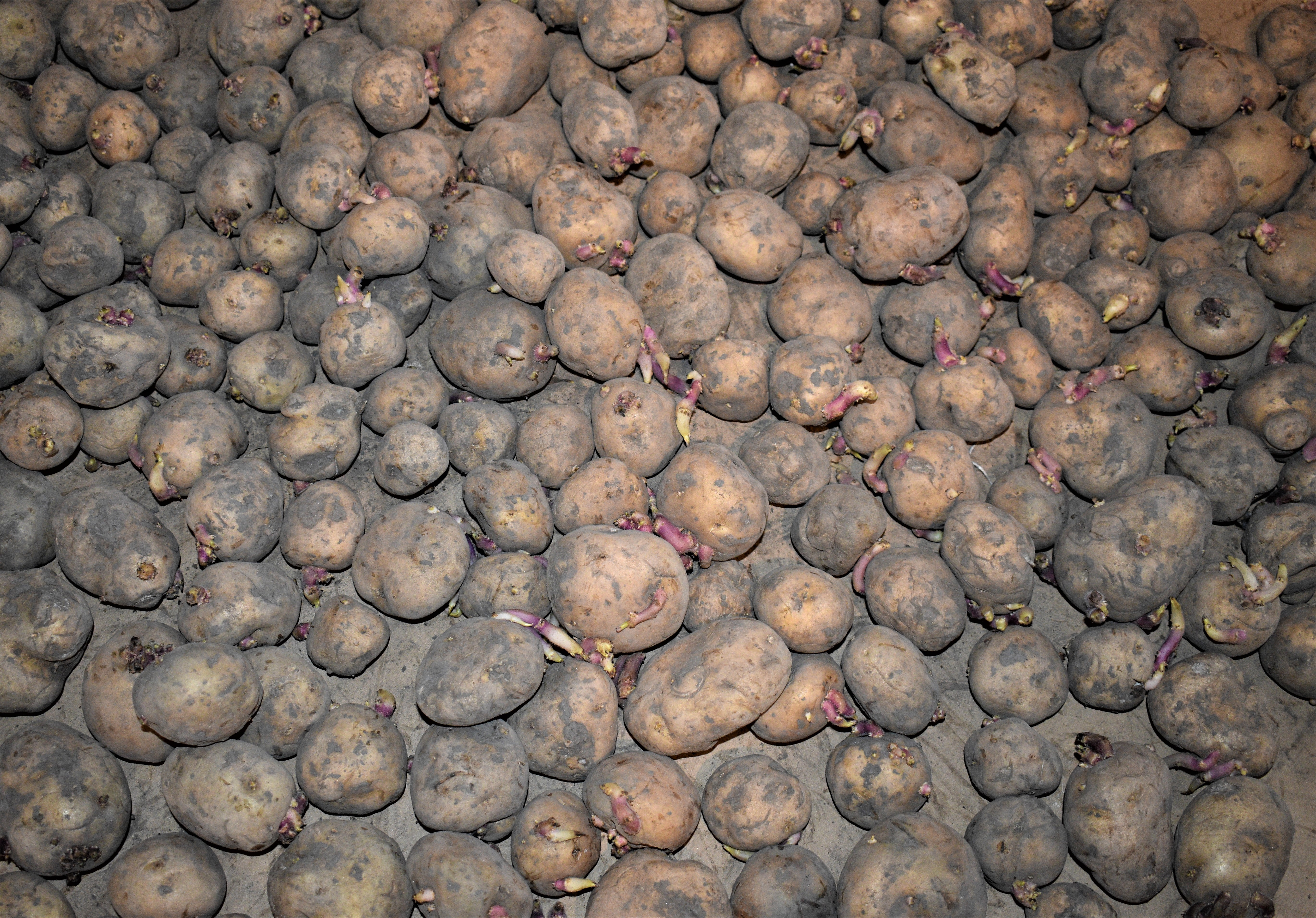
A study at the University of Idaho College of Agriculture states:
“For Russet Burbank, an average of 2.5 to 3.5 stems per plant is considered optimum for maximum performance in commercial plantings. The number of eyes per seed piece influences stem numbers per plant.”
If you want BIG POTATOES for baking, etc. then you want your whole potato or cut piece to have 2-4 eyes facing towards the sky. If you already have stems sprouting from the eyes you want to get 2-4 stems per piece or per plant. This is going to give each stem plenty of room to produce large potatoes.
If you want small potatoes you want more eyes per whole potato or cut piece of seed. This of course will produce more stems. You want 5-8 stems per plant, all facing towards the sky. This is going to produce more potatoes per plant but they will all be smaller.
Size/Weight Of Potato Seed
Nora Olsen, Ph.D., extension potato specialist at the University of Idaho Kimberly Research and Extension Center and president of the Potato Association of America tells rodalesorganiclife.com:
“We do not recommend planting a seed piece or whole tuber smaller than 1.5 ounces,” “If you plant a whole seed or seed piece below this size, the resulting plant may not be as vigorous and large as desired and may yield fewer and smaller tubers.”
This basically tells you all you need to know. The seed (whether whole or cut) needs to be over 1.5 ounces. Many times it is stated between 1.5-3 ounces, but it can be over 3 ounces as long as it has the number of stems you are looking for.
Again as a home gardener you do have to realize that much of the data in the studies you will find goes into things we are not as concerned about. None of the papers were geared towards anyone planting under a few hundred acres. SURE, we want to be efficient and buy less seed to plant more land! However it does get a bit tedious. If you were planting 1000 acres it would matter if you were cutting all of your seed pieces to between 1.5 and 3 ounces but guess what? I bet you are not planting 1000 acres. A 5 ounce piece with the correct number of stems will do just as well or better than a 3 ounce. You use more seed material is the only downside.
So..... Seed always over 1.5 oz., between 1.5-3 oz. best, but over 3 oz. still works…….Got it!
Potato Row & Plant Spacing
Planting For Larger Potatoes But Less Quantity
- Row Spacing @ 36 inches
- Plant Spacing @ 11-14 inches
Planting For Smaller Potatoes But More Quantity
- Row Spacing @ 27 inches
- Plant Spacing @ 7-9 inches
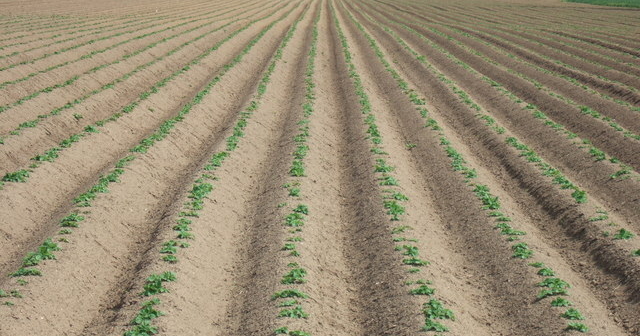
Summary
- Don’t always trust what you hear or read until you examine the data.
- Understanding who the study is made for will help you to understand the data better.
- A seed potato can be various sizes.
- You can plant whole or cut seed potatoes with equal success.
- Larger seed potatoes can be cut into pieces to make several smaller seed potatoes.
- The number of stems per seed helps determine size of potatoes that grow.
- The weight of a seed (whole or cut) should always be over 1.5 ounces.
- 1.5+ Ounces with 2-4 stems per seed, plant space 11-14”, row space 36” for BIG POTATOES.
- 1.5+ Ounces with 5-8+ stems per seed, plant space 7-9”, row space 27” for small potatoes.

Sources
- http://dspace.unza.zm:8080/xmlui/bitstream/handle/...
- https://www.rodalesorganiclife.com/garden/small-se...
- https://link.springer.com/article/10.1007/BF028701...
- https://www.rodalesorganiclife.com/garden/small-se...
- https://www.cals.uidaho.edu/edcomm/pdf/CIS/CIS1031...
- https://www.researchgate.net/publication/225921063...
- https://cropwatch.unl.edu/potato/wound_healing_cut...
